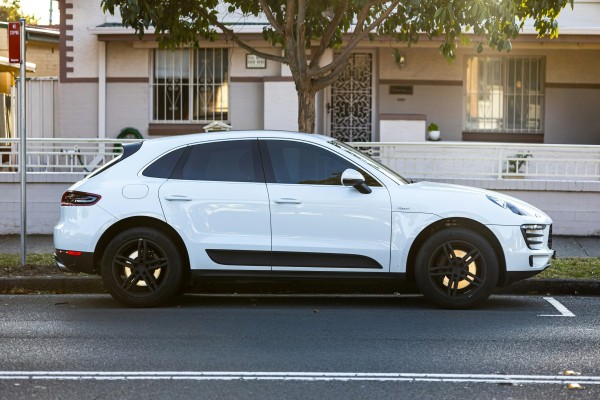Understanding the Australian tax system 2025

A complete guide to paying income tax in Australia for residents and expats.
Starting a new job is exciting but there’s a lot to get your head around. Aside from understanding all of your new responsibilities, there’s also the small matter of paying tax.
In Australia, tax brackets, entitlements, rules and regulations shift every year. So, it’s important to stay up to date to make sure you have a full and comprehensive understanding of what you should be paying in tax and when.
In this article we’re sharing the ins and outs of the Australian tax system, so you can keep on top of your finances and stay one step ahead of the tax man at all times.
Jump to section:
What is income tax?
Before we dive into the inner workings of the Australian tax system let’s explore what income tax actually is.
Whenever you earn money from employment, government payments, investments or pensions you must pay tax.
The level of tax you pay will vary depending on your level of income, exemptions and rebates.
Taxes paid by Australian citizens and residents help fund local and national services such as health care, education, roads, the Australian Defence Force, Australian welfare system and disaster relief.
The Australian tax system is a mix of direct and indirect taxes levied by both the Commonwealth and State governments, depending on the type of tax.
How does taxation work in Australia?
Australia has a progressive tax system, but what does this really mean?
Well, it means there is a high tax-free threshold of $18,200 followed by increasing tax rates at subsequent thresholds.
In other words, low income workers (earning under $18,200 per year) aren’t required to pay any tax at all, while the largest amounts of tax are paid by those with the highest income.
How much is tax?
The level of tax you pay will vary depending on a number of factors, the most important being how much you earn. The below tables outline the tax brackets for Australian residents.
Tax brackets 2023 - 2024 (ending June 30 2024)
| Taxable income | Tax paid on income |
| $0 - $18,200 | Nil |
| $18,201 - $45,000 | 19c for every $1 earned over $18,200 |
| $45,001 - $120,000 | $5,092 plus 32.5c for every $1 earned over $45,000 |
| $120,001 - $180,000 | $29,467 plus 37c for every $1 earned over $120,000 |
| $180,001 and over | $51,667 plus 45c for every $1 earned over $180,000 |
Tax brackets 2024 - 2025 (ending June 30 2025)
| Taxable income | Tax paid on income |
| $0 - $18,200 | Nil |
| $18,201 - $45,000 | 16c for every $1 earned over $18,200 |
| $45,001 - $135,000 | $4,288 plus 30c for every $1 earned over $45,000 |
| $135,001 - $190,000 | $31,288 plus 37c for every $1 earned over $135,000 |
| $190,001 and over | $51,638 plus 45c for every $1 earned over $190,000 |
There are some tax considerations before you start working in Australia, such as:
Completing a tax file number declaration (employees only)
Once all of the necessary permissions and registrations are completed, employees are required to complete a Tax file number declaration.
This provides the details of your employment and salary/wages to the government so that tax payments can be set up.
Your employer usually provides you with a copy of the form for your completion. You then have 28 days to complete the declaration and give it to your employer.
NOTE: If you don't complete your Tax File Declaration within the designated time frame, your employer is obligated to take tax from your pay at the highest rate.
Paying tax in Australia
Employees
When you are employed, your employer will take tax out of your salary or wage and send it to the Australian Taxation Office (ATO).
In this instance you will receive a payslip (weekly, fortnightly or monthly) showing exactly how much tax you have paid.
The amount of tax you pay depends on:
At the end of the financial year (June 30th) your employer will provide you with a payment summary or income statement showing how much you have earned throughout the year. At this time a balancing process known as your tax return is due for completion.
Self employed
The tax paying process varies a little for self employed people depending on how much they earn and what arrangement they have in place with the ATO.
For many businesses it will involve quarterly Business Activity Statements throughout the year (BAS) which balance finances and outline how much tax and Goods and Services Tax (GST) (if applicable) should be deducted from the quarter’s earnings.
This allows businesses to keep track of finances throughout the year with a final balancing through tax return at the end of the financial year.
Tax checklist for self employed
End of financial year (EOFY) tax return
Australian residents who have earned an income over the tax free threshold ($18,200) are required to complete a tax return at the end of the financial year (EOFY).
A tax return:
Use the ATO ‘Do I need a tax return?’ tool if you’re unsure whether you need to lodge a return or not.
How to complete and lodge your tax return
There are a number of different options available to individuals required to complete a tax return:
When do I lodge a tax return?
Your tax return covers the income received from July 1st to June 30th.
If you are completing your own tax return it can be done any time between June 30th and October 31st providing you have your payment summary / income statement along with any other necessary documentation and receipts.
If you’re lodging your tax return through a registered tax agent your agent will be able to tell you the date by which your return must be completed, but you must be registered with an agent by 31st October.
Medicare levy and surcharge
In addition to income tax, most people are required to pay a Medicare levy, a payment that funds some of the costs of Australia’s public health system (Medicare).
The Medicare levy is 2% of your taxable income. If you're on a lower income, your levy may be reduced, or you may not have to pay it at all.
If you're on a higher income, you may also have to pay a Medicare levy surcharge of between 1.0% and 1.5% of your taxable income. This depends on the level of private health insurance you have and how much you and your spouse earns (if you have one).
Goods and Services Tax (GST)
Goods and services tax (GST) is a 10% tax applied to most goods, services and other items sold or consumed in Australia.
Businesses must register for GST if they have a turnover of more than $75,000 AUD.
Once registered for GST you must include GST in the price that you charge for goods and services.
This is then paid to the ATO through your quarterly activity statements (BAS).
There’s no doubt there’s a lot to think of when it comes to the Australian Tax System. If you’re new to working in Australia, save this article for quick and easy reference to the rules, tools and tax payments that apply to you.
What do our customers say?

















![Electric Bass Guitar Amplifier [90x70x35cm ; 50kgs], Electric Bass Gui... Electric Bass Guitar Amplifier [90x70x35cm ; 50kgs], Electric Bass Gui...](https://cdn.upmove.com.au/image/listing/3526991a6bdc56e645ac1b2a540b126e.jpeg)

